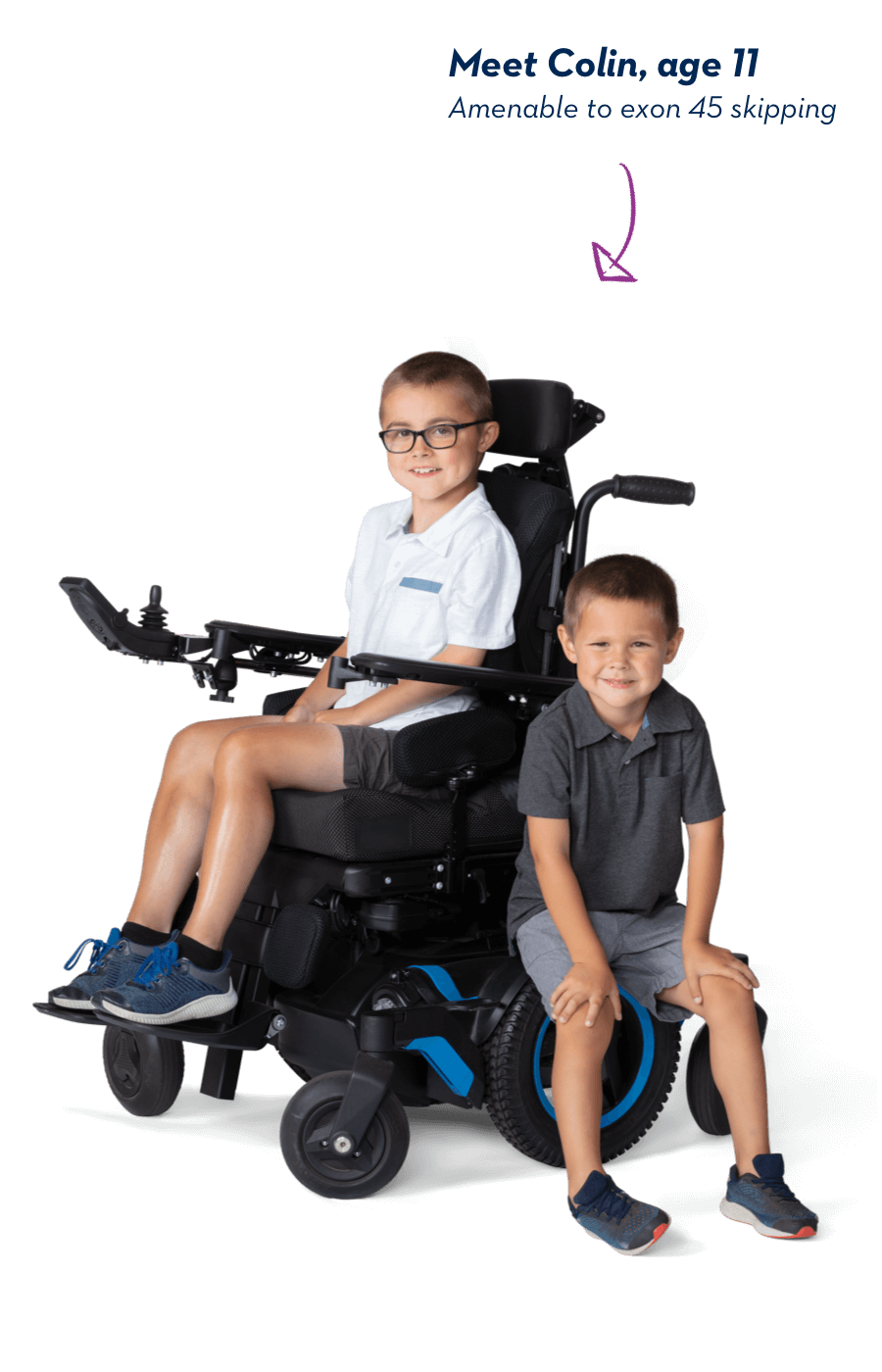Expanding options for Duchenne in patients amenable to exon 45 skipping.



AMONDYS 45 is an FDA-approved Duchenne muscular dystrophy treatment for patients who have a confirmed genetic mutation in the dystrophin gene that can be treated by skipping exon 45. AMONDYS 45 helps the body make a shorter form of the dystrophin protein.a
aBoys treated with AMONDYS 45 showed varying levels of increased dystrophin production after 48 weeks. In an ongoing clinical study, 27 boys (median age 9 years) receiving AMONDYS 45 had an average dystrophin level of 1.74% of normal, compared to 0.76% in 16 boys who received a placebo infusion.
APPROVED UNDER ACCELERATED APPROVAL
Accelerated approval allows for drugs to be approved based on a marker that is considered reasonably likely to predict a clinical benefit. AMONDYS 45 treatment increased the marker, dystrophin, in skeletal muscle.
Accelerated approval also requires that, after approval, additional adequate and well-controlled studies called confirmatory trials are conducted to verify and describe the clinical benefit.
Who Can Take It?
Learn the importance of understanding your genetic mutation and what it means to be amenable to treatment with AMONDYS 45.
Starting Treatment
Starting treatment with AMONDYS 45? Let us take you through the process so you know what to expect.
Getting Support
With the SareptAssist patient support program, we’ll help you navigate the process of starting therapy with AMONDYS 45.

“SareptAssist has done an outstanding job of putting our minds at ease throughout this entire journey. They answered any questions we had while providing useful resources.”
Jake, Colin's father

